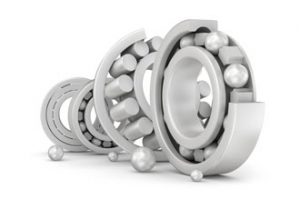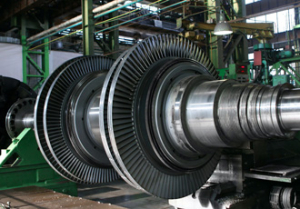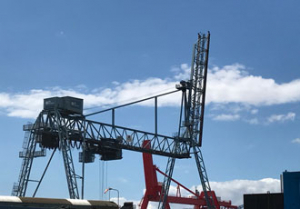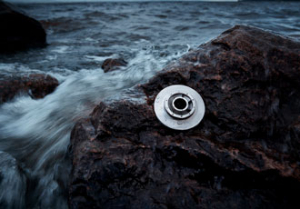Ceramic bearings for medical environments

Back in 2000, scientists discovered zircon in rocks that showed life might have started 500 million years earlier than previously thought. This incredible compound has made a huge impact, as has its oxide, zirconia (ZrO2), used to make full ceramic bearings. Here, Chris Johnson, Managing Director of SMB Bearings, explores if the increased costs are really worth it in medical applications.
Advancements in medical equipment and care have created demanding new environments for manufacturers of medical grade bearings. Each medical application has its own set of required properties and performance criteria.
Applications that require high precision or high speed capabilities, are more suited to steel bearings. For example, medical robots require high precision components to undertake keyhole surgery and centrifuges must spin at high speeds to separate substances that have different weights.
In contrast, medical and surgical devices that need to withstand harsh chemicals during the sterilisation process, require ceramic bearings. In this harsh environment, steel bearings can become susceptible to corrosion, so hard-wearing ceramic bearings are ultimately a better choice to extend the service life of the device. Ceramic bearings are equally suited to cleanrooms, as they do not require lubrication to run, therefore reducing the risk of contamination.
Is the material cost worth it?
Traditionally, bearings in medical instruments have been created from high purity metals such as martensitic stainless steel. Stainless steel miniature bearings are the most common type used in handheld medical equipment, but, some high value equipment applications are far more suited to ceramic materials.
Full ceramic bearings are harder than steel and offer superior corrosion and heat resistance, higher dimensional stability and lower density. However, this comes at a cost. Ceramic bearings are significantly more expensive than their steel counterparts.
So, when does investing in ceramic bearings become worth it? High value applications, like lab equipment, have exact requirements that need to be met every time the application is used. Using the wrong components in such equipment can contaminate study conditions, which could cause the study to cease altogether.
Strict regulations in the medical and pharmaceutical industries are in place to prevent contamination. Choosing the correct bearing for these stringent environments, coupled with other design considerations such as the need for high speed, low noise and non-magnetic properties, is key.
Take Magnetic Resonance Imaging (MRI) for example, the imaging technique associated mostly with hospital MRI scanners. This technology uses a strong magnetic field to generate two- or three-dimensional images of any living subject. Standard steel bearings cannot be used in these scanners due to their magnetic properties, so ceramic bearings are the best choice to use in these high-value applications.
Plastic ball bearings are also completely nonmagnetic when fitted with polymer, glass or ceramic balls. They are ideal for use in MRI equipment or sensors where there cannot be any magnetic distortion. The rings can also be made from different plastics, such as polyether ether keton (PEEK) or polytetrafluoroethylene (PTFE).
Hospitals want to ensure that these high value machines run effectively without high maintenance parts, so quality ceramic bearings prove vital in these situations. Full ceramic bearings do not require a lubricant to operate, whereas steel alternatives may need routine maintenance to relubricate the part.
In addition, if a bearing requires a lubricant, it must be carefully matched to the bearing material and application environment. In a cleanroom for example, where the cleanliness of a room is classified from ISO 1 (strictest) to ISO 9 (room air), based on the ISO 14644-1 criteria, an inert cleanroom grease is vital as most greases will vaporise to an unacceptable level, contaminating the environment.
In contrast, for high value medical devices such as surgical robots, steel bearings are favoured over ceramic options that can’t compete with steel’s speed and precision. For this growing area of medical technology, the need for accurate and precise bearing performance has never been higher.
Like all bearings for robotics, surgical robot bearings must deliver the highest possible rotational accuracy, while also being small enough to fit into these often compact and portable hospital devices. Steel thin section bearings or miniature ball bearings, which have an inner diameter of under 10mm, are most commonly selected for their space saving potential.
The considerations when choosing bearings for medical robots and MRI scanners are very different. It’s important to review each individual application and the cost associated with the entire component lifespan, instead of solely focusing on the initial investment. For high value equipment like MRI scanners, which require non-magnetic properties, the increased costs of ceramic bearings are clearly justified.
Similar articles
More from SMB Bearings
- Should remanufactured bearings become the norm? 21st May 2021
- Radial and thrust forces in bearings 6th April 2021
- Ceramic bearings for medical environments 24th March 2021
- The myth surrounding hybrid ceramic bike bearings 18th March 2021

-(1)ed.jpg)










Write a comment
No comments